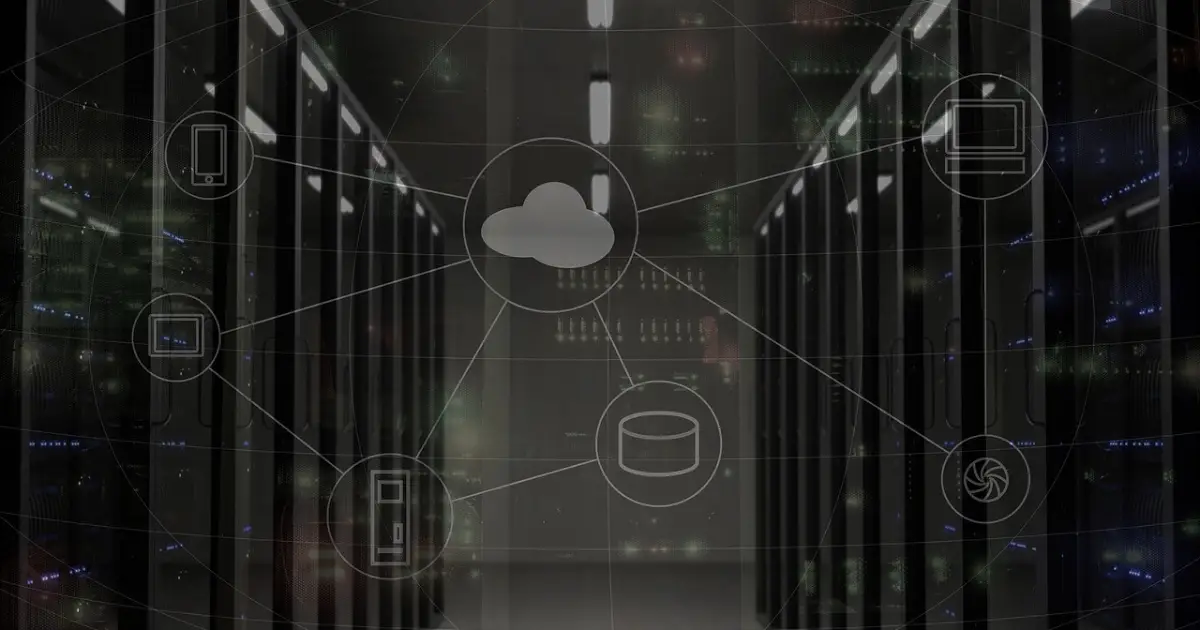focus notes


How much does cloud computing cost? We explain how to reduce not only implementation costs but also operational and management costs.

table of contents
How much does it cost to move to the cloud?
"I want to reduce the costs of moving to the cloud."
Some people who are moving towards cloud computing may have the same concerns as mentioned above. The cost of moving to the cloud varies depending on the service and function.The more features you have, the higher the usage fee may be. In order to avoid unnecessary costs, it is important to choose the service that is most suitable for your company.
In this article, we will explain the costs involved in moving to the cloud, how to reduce installation and operation management costs, and points to consider when choosing a cloud server. We will also explain frequently asked questions regarding cloud migration costs, so please refer to this if you are concerned about cloud migration costs.
What is the cost of cloud computing? Comparison with on-premise type
We will explain the costs associated with cloud migration in the following two items.
- Market price for cloud computing
- Compare the costs of cloud type and on-premise type
Market price for cloud computing
The cost of moving to the cloud varies depending on the service, usage conditions, options, etc.For example, charges may be calculated based on the amount of resources you consume, such as the amount of CPU, memory, and storage you use. You will need to choose the plan that best suits your company and then calculate the costs involved.
Additionally, cloud service usage fees may be paid monthly or once a year, so it is important to understand costs from a long-term perspective.
Compare the costs of cloud type and on-premise type
Although it depends on usage conditions, the initial cost tends to be higher for the cloud type and the on-premise type.This is because on-premises models require the purchase of physical servers, network equipment, storage, and other hardware. Additionally, costs such as space and security measures to operate these facilities must be considered.
On the other hand, the cloud type does not require the purchase of a server, and the initial cost is significantly lower than that of the on-premise type. The maintenance and operation of the service is carried out by the cloud service provider, so your company does not generally incur any costs.
As you can see, the costs are different between cloud and on-premises types. If you want to reduce initial costs, a cloud-based service is better.
Explaining the cost breakdown when introducing cloud servers etc.
Here we will explain the breakdown of costs involved when introducing a cloud server, a type of cloud service, in the following six categories.
- Installation cost
- Monthly basic fee or pay-as-you-go fee
- Optional charges
- License fee
- personnel costs
- Communication costs
Installation cost
When installing a cloud server, you will first need to pay the installation fee.Service contracts and initial setup fees may apply.
Many cloud services do not require installation costs. For example, if there are no costs at the time of contract and you can do the initial setup yourself, you can reduce the installation cost to 0 yen. However, depending on the service, the initial setup may be complicated and cannot be handled by your company.
In such cases, you can utilize paid installation support from cloud service providers. Although convenient, such support services will likely come at a cost.
Also, as mentioned earlier, cloud-based services do not require the purchase of servers or system construction. You won't need to purchase expensive equipment, so it will be easier to keep your initial costs down.
Monthly basic fee or pay-as-you-go fee
If you install a cloud server, there will be running costs based on monthly basic charges or pay-as-you-go charges.The monthly basic fee is the minimum cost to use the service. Regardless of the usage status of the service, a fixed amount will continue to be charged every month as long as the contract is used.
With pay-as-you-go pricing, the amount varies mainly depending on the following factors:
- Amount of data used
- Number of connected devices
- Utilization time
For example, the cost increases as the amount of data used increases. If you use it frequently, the cost will be high. Conversely, reducing the amount of data used can reduce costs.
Depending on the service, there may be a fee structure that combines a basic monthly fee and pay-as-you-go charges. When choosing a service, be sure to check the pricing structure.
Optional charges
When installing a cloud server, optional fees may be required.For cloud servers, the main options are:
- Memory expansion
- Add domain
- Line upgrade
- Security measures
- Operational support
For example, if the memory set in the basic plan of the service is insufficient, there are cases where you can increase it as an option. There may also be cases where you need options to further strengthen security measures or receive operational support. There are also things that can be added later, not just at the time of installation, so you can add them according to your company's usage situation.
If you want to keep costs related to options down, it's a good idea to start by eliminating or minimizing options, and then add them as needed based on your actual usage.
License fee
Installing a cloud server also requires licensing fees.License fee is the fee required to use the service. Although the names and types vary depending on the service, there are mainly the following types of license fees:
- basic license
- User License
A basic license is a license fee for one contract. Since the cost is for using the contracted service, it does not change depending on conditions such as the number of users.
User license is a license fee that varies depending on the number of users. The more users you register, the more your costs will increase.
License fees may be paid once a year on an annual basis or paid monthly on a monthly basis. Please check the timing of payment in advance, as it varies depending on the service.
personnel costs
Personnel costs are also required to properly operate the system.Specifically, the main labor costs are as follows:
- System administrator personnel costs
- Project manager labor costs
To make good use of cloud servers, a certain level of IT knowledge is required. If you have personnel with specialized knowledge, you can operate the cloud server appropriately based on that knowledge. To make effective use of cloud servers, you should also secure labor costs.
Communication costs
If you install a cloud server, communication costs will be incurred.A cloud server is a service that is used over the Internet. Since you cannot use the service without connecting to the Internet, you will be charged a monthly fee for using the Internet line.
Communication costs mainly include the following:
- Line usage fee
- provider fee
- Data communication fee
A provider is a service or operator that connects you to the Internet. You cannot use the Internet just by connecting a line; you can only use it by signing a contract with a provider.
The line and provider may be separate or may be combined. When setting up your internet environment, compare multiple services and choose the best line and provider.
In addition, using cloud services may increase the amount of data you communicate, which may increase your data charges. Be sure to check in advance the data usage limit for your contract plan and the costs involved if you exceed the limit.
How to reduce implementation and operational management costs
There are four ways to reduce installation and operation management costs:
- Decide in advance what features you need
- Set your budget in advance
- Constantly monitor usage
- Adjust the number of licenses
Decide in advance what features you need
Decide on the necessary functions in advance to reduce installation and operation management costs.By deciding in advance, you can avoid signing up for a service with many features and high fees or adding extra features.
If you do not decide in advance what functions you need, the criteria for selecting a service will be unclear. If you introduce a service that is equipped with a variety of functions without standards, usage fees may become expensive. By determining the necessary functions in advance, you can avoid incurring unnecessary costs.
When deciding on the necessary functions, be sure to clarify the purpose of your cloud migration. If you clarify the purpose of what you want to achieve by implementing the system, you can narrow down the functions required to achieve that purpose. Decide the necessary functions in advance based on the purpose of implementation to avoid incurring unnecessary costs due to unnecessary functions.
Set your budget in advance
Setting a budget in advance is also important for reducing implementation and operational management costs.If you decide on a budget, you can adjust the service to fit within your budget.
If the budget has not been decided, there is a risk that the implementation will proceed without understanding the overall cost of cloud computing. There are also cases where costs balloon due to adding features that you are not sure you will use or options that you do not need.
By setting a budget in advance, you can search for services that can be implemented within your budget and narrow down your options to only what you need. This will prevent you from incurring extra costs.
When determining your budget, mainly calculate it based on the following three indicators.
- profit budget
- sales budget
- Expense Budget
The profit budget is an indicator calculated by subtracting costs and expenses from sales. It is an indicator of how good or bad a company's performance is, and increasing profit margins leads to stable operation and growth of the company.
A sales budget is the sales target for a company's sales activities. We aim for higher numbers based on market trends and past performance.
Expense budgets are indicators of expenses other than costs necessary for a company's activities. In order to operate a company, various costs are incurred, such as personnel costs and utility costs. Cloud computing costs and management costs also fall under expenses.
Set your budget based on these metrics.
Constantly monitor usage
Constantly monitoring usage status also helps reduce installation and operation management costs.Monitoring allows you to understand usage and cut costs by removing unnecessary functions, etc.
With cloud services, the cost varies depending on the features used, data usage, etc. Therefore, it is important to consider in advance how you will use the service and consider the features and specifications.
However, even if you carefully consider the necessary functions and storage capacity before implementation, it is not uncommon to find that you do not need them after actually using the system. If you leave the functions and storage capacity that you find are unnecessary, you will end up incurring costs.
By monitoring the usage status, it is possible to visualize the usage status of each function and data usage. This allows you to remove unnecessary functions and adjust the amount of storage, leading to cost cuts.
Please note that data usage may vary significantly from month to month, and there may be functions that are necessary even if you do not use them frequently. Don't just refer to short-term usage conditions; make adjustments from a long-term perspective.
Adjust the number of licenses
Adjusting the number of licenses is also important to reduce installation and operation management costs.Adjustments such as limiting the number of registered users and deleting unused licenses can help reduce license costs.
As mentioned earlier, some license fees vary depending on factors such as the number of registered users. This means that once you register a license, the license fee will continue to apply until you delete it. Therefore, it is a good idea to decide in advance the upper limit on the number of people who can register licenses. By setting an upper limit, you can prevent the number of licenses from increasing too much and increasing costs. Check the number of licenses required for your business and adjust them to avoid increasing them too much.
Points to consider when choosing a cloud server etc.
There are two main points to consider when choosing a cloud service such as a cloud server.
- Choose based on cost effectiveness
- Check if you can use it
Choose based on cost effectiveness
Choose based on cost-effectiveness.If it is cost-effective, you can reduce unnecessary expenses and use it effectively.
For example, even if you introduce an inexpensive cloud service with few functions in an attempt to forcefully reduce costs, it will not be useful if it does not have the necessary functions. If it is not utilized, there is a risk that the cost burden will only increase. With cost-effective cloud services, you can utilize them without incurring unnecessary costs.
To do this, it is important to check that the services have the optimal functions and specifications for your company, and that the cost is well-balanced. Choose a cost-effective service by comprehensively considering what you want to achieve through cloud computing and your available budget.
Check if you can use it
It is also important to check whether you can use it properly.Choosing a cloud service that you can master will make it easier to utilize it in your business.
The functionality and specifications differ depending on the cloud service, so the usability also differs. Even if the functions are similar, you may find that the operation method is easy to understand, or you may find it difficult to use. If you choose a cloud service that is difficult to use, you may not be able to take full advantage of its features.
Therefore, it is important to check the cloud specifications and operation methods and check whether you can use it properly before introducing it. Some have free trials available. If there is a free trial, try it out and see how easy it is to use.
Frequently asked questions regarding cloud migration costs
Here we will explain some frequently asked questions.
- First of all, what is cloud computing?
- What is cloud native?
- What is system integration cost?
First of all, what is cloud computing?
Cloudization refers to migrating systems and data managed in-house to services that can be used over the Internet.Services provided via the Internet are called "cloud services" and mainly include the following services.
- cloud server
- cloud file server
- Cloud accounting software
- Cloud-based customer management system
- Cloud-type production management system
Before the advent of these services, companies installed servers and built software in-house. However, as mentioned earlier, installing a server requires a huge amount of money and time to build the environment.
With cloud services, you can use the service immediately as long as you have an internet connection, without having to prepare your own servers or software. There is no cost to set up the environment, and it can be introduced in a short period of time. Moving to the cloud will help reduce IT system-related costs and efforts.
Please refer to the article below for details on cloud migration.
What is cloud migration? Explaining the differences, advantages, disadvantages, and implementation examples with on-premises type
What is cloud native?
Cloud native is a way of thinking that develops systems based on the premise of using the cloud.The purpose of cloud native is not simply to replace what can be done on-premises with the cloud. In order to build a system that takes advantage of the unique advantages of the cloud, there are the following advantages.
- The system is easy to modify and change
- The impact of failures can be reduced
Cloud native incorporates a system called microservices, which divides applications into individual functions and links them together. By changing the combination of segmented applications, it is possible to flexibly modify and change the system.
Furthermore, segmentation makes it easier to discover where the cause is when a failure occurs. It is possible to pinpoint the problem or problem while other applications are running. This minimizes the impact of failures and defects.
What is system integration cost?
System integration costs are the costs incurred when integrating multiple software and computers to develop or construct a new system.
We aim to improve convenience and efficiency by combining multiple software.
The service that undertakes system integration is called "SI", and the operator is called "SIer". There are two ways to perform system integration at the optimal cost: in-house or outsourcing. When outsourcing, compare cloud service providers.
Please note that our company is an SIer. We undertake a wide range of work related to system development, so please feel free to contact us.
summary
There are various costs involved when moving to the cloud. While it is possible to implement the system with low initial costs, there are running costs such as a monthly basic fee and pay-as-you-go charges.Running costs continue to be incurred while you use the service, so depending on the usage conditions and scale, the cost burden may be large.
In order to optimize the cost of installation and operation, it is important to narrow down the functions and adjust the number of licenses. Monitor usage and adjust functions and specifications as appropriate to avoid unnecessary costs. If you are concerned about the cost of moving to the cloud, please feel free to contact us.
Achievements left behind
48 years since its establishment.
We have a proven track record because we have focused on what is important.
It has a long track record in both the public and private sectors.
Number of projects per year
500 PJ
Annual number of business partners/customers
200 companies
Maximum number of trading years
47 years
Total number of qualified persons
1,870 people






